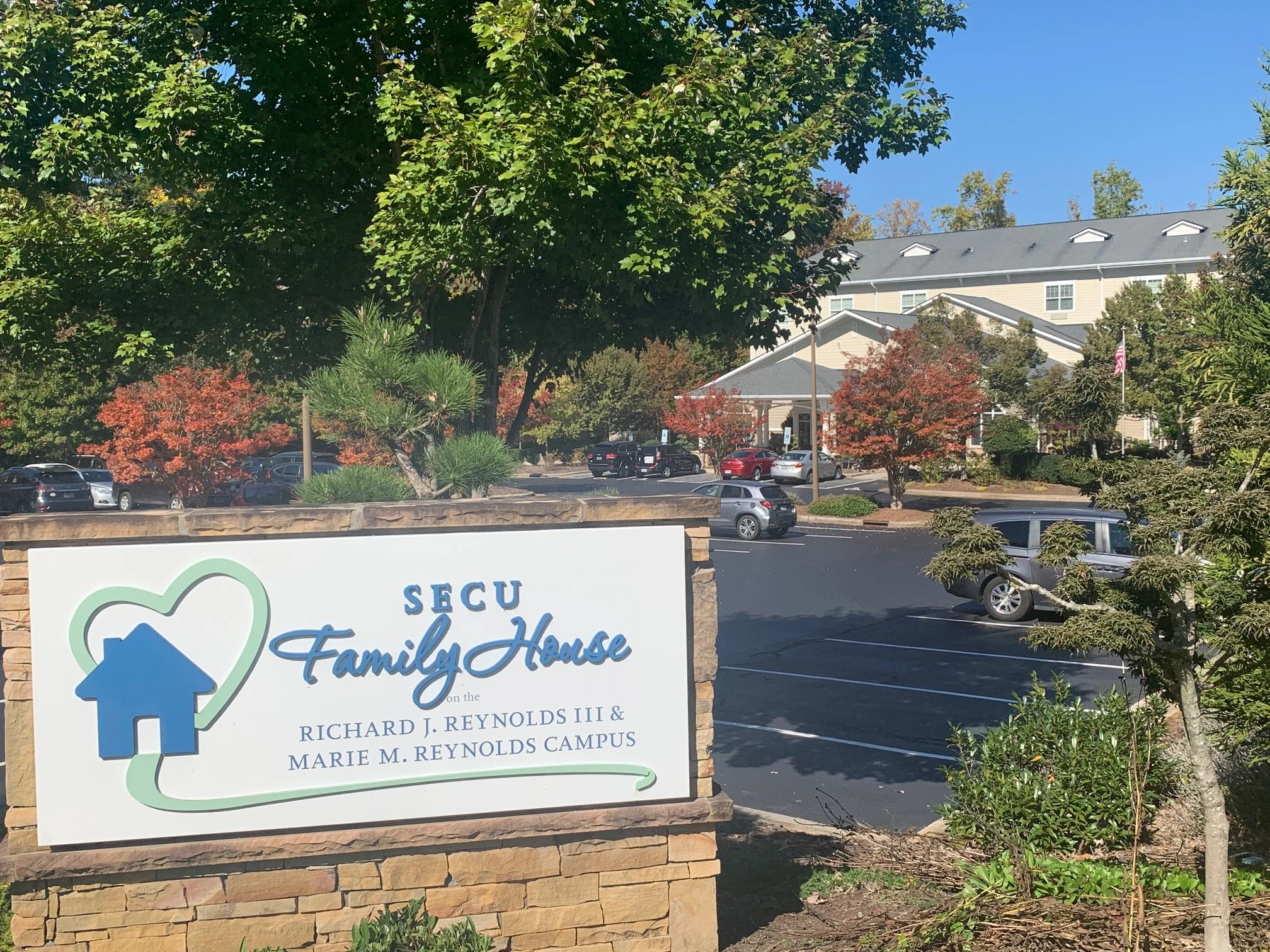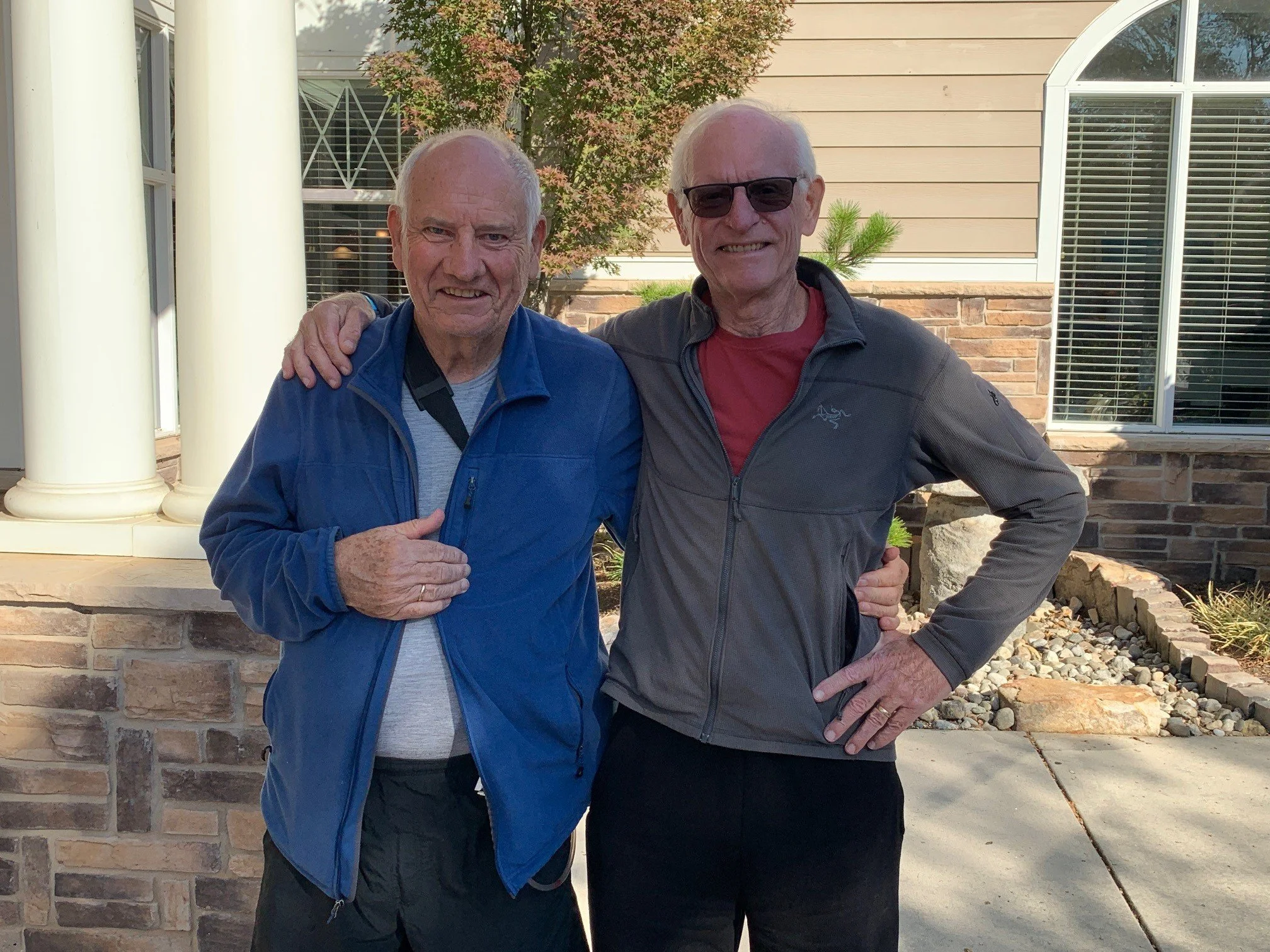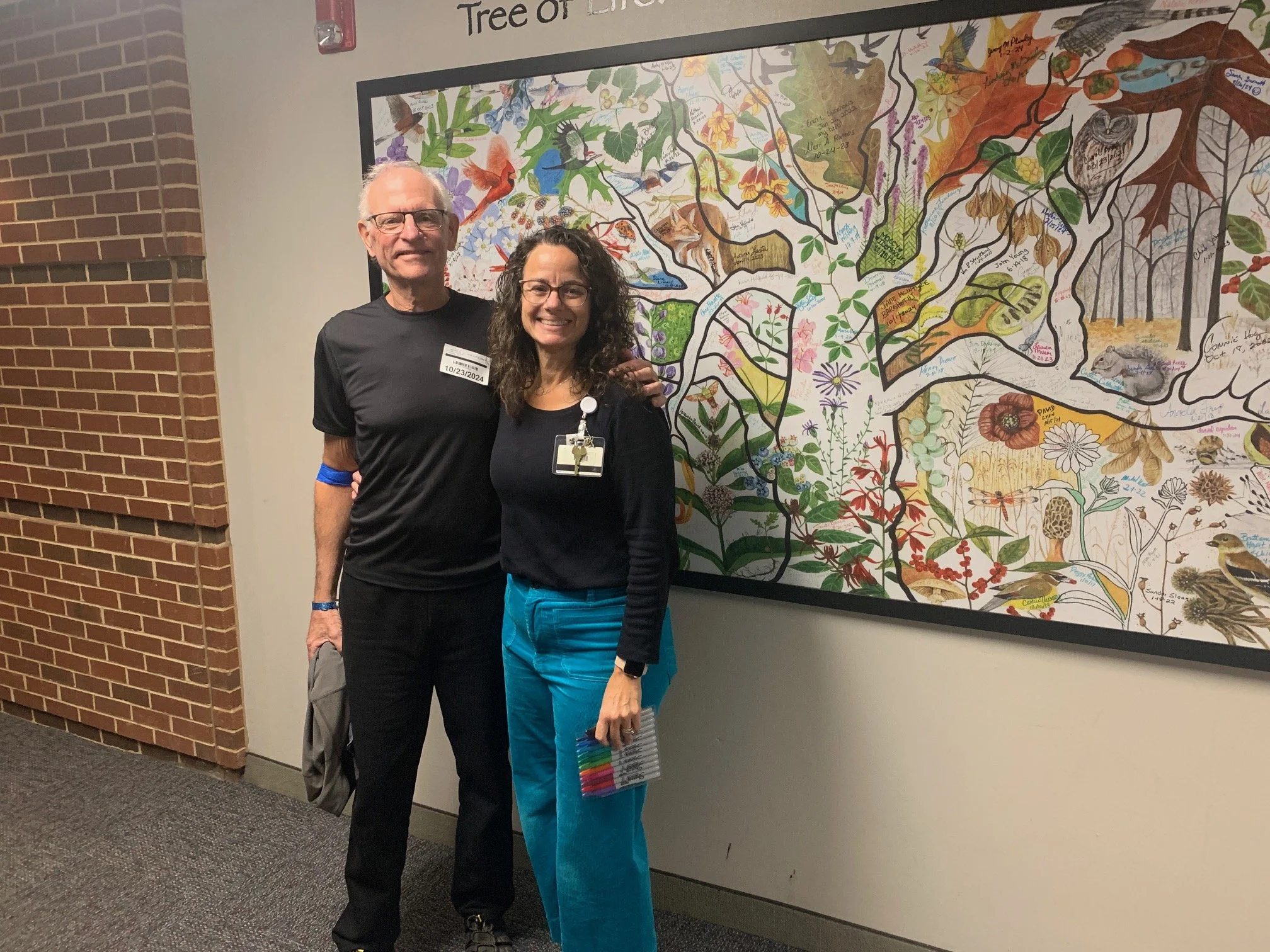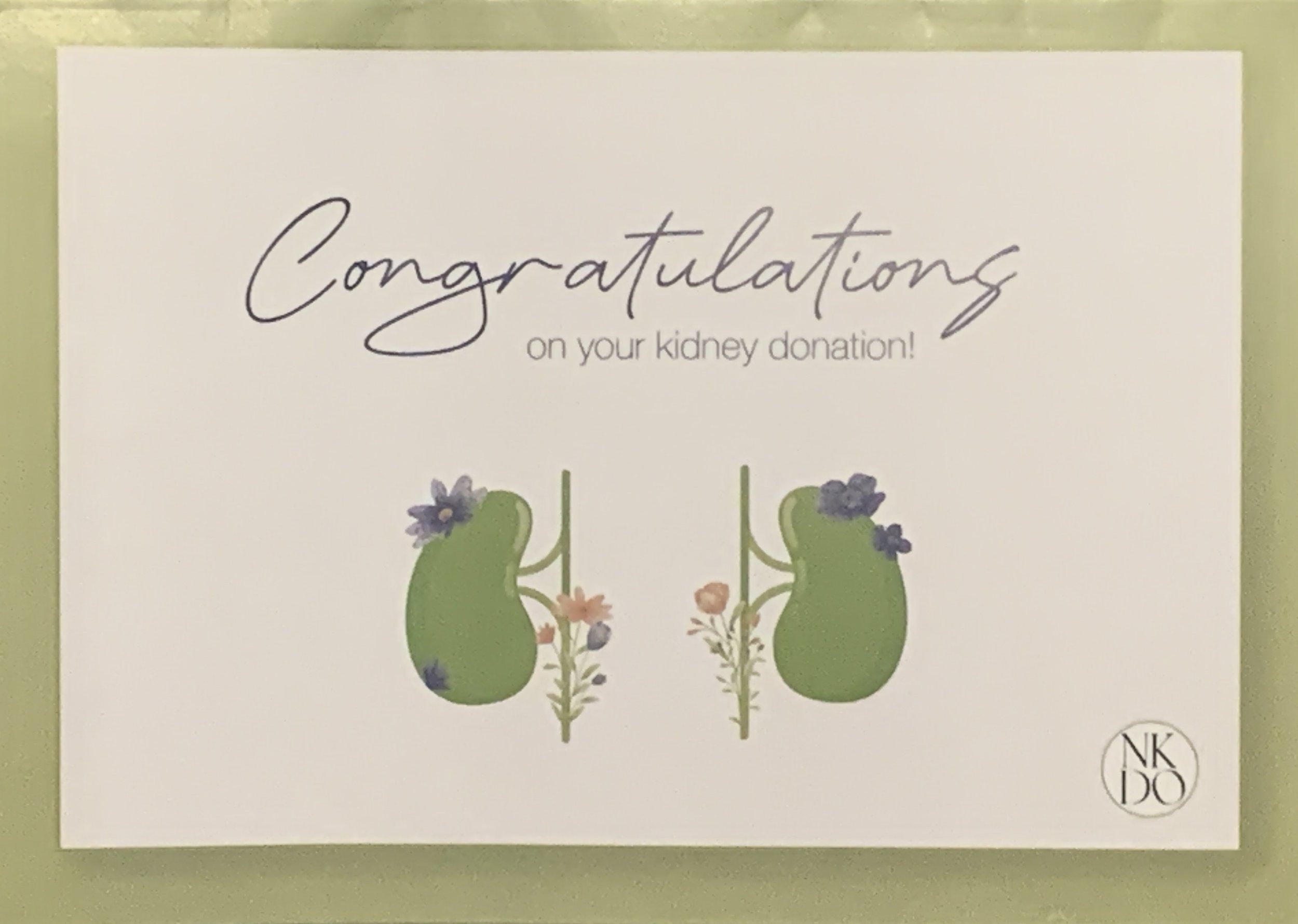Donating Life 3 - Recovery, Return and Retrospective
/A successful living donor kidney transplant surgery completed, David now had post-surgery issues with which to contend. His pain was significant for the first couple of days. Tramadol, an opioid, along with Toradol, a strong NSAID, were administered for pain, but only for the first day. He refused Tramadol on the second day. We determined that the On-Cue med delivery system placed at his incision site was not working and with an adjustment, the pain became more tolerable the next morning after surgery. His blood pressure was high and he had no appetite. We were concerned, but were reassured these were normal reactions post-surgery. He was up and walking early on Day 2.
I spent two nights with him in his hospital room, sleeping on a much-too-short sofa one night and in a recliner chair the next. Though neither of us slept well, I felt better being close. He dozed lots in between constant nurse, CNA and lab tech visits during the night and a parade of doctors, surgeons, interns, residents, students as well as nurses and CNAs during the day. All were interested in checking out his incision and his general condition. All were pleased with the results.
We could have gone home on Day 2, but opted for one more in-hospital night. By the morning of Day 3, he was walking the hospital corridors, had visited Burger and we were anxious to head ‘home’ to SECU Family House. Armed with a bag of meds from the hospital pharmacy, mostly to aid in urination and bowel movement, we were discharged in the early afternoon. The only pain med was Extra Strength Tylenol. In the future, no NSAIDs (nonsteroidal anti-inflammatory drugs) like Ibuprofen or Alleve, for instance, should be used… ever. Tylenol will be his best friend for relieving pain going forward.
It was a novelty for me to drive and chauffeur David around for a change since he was restricted from driving for the next week. We returned to SECU Family House which would be our home-away-from-home for the next 10 days till we flew back to Las Vegas. SECU is quite the place.
SECU Family House… like a ronald McDonald House for adults!
Four nights a week, volunteers serve complimentary dinners to residents, all donated by local folks and businesses. The SECU staff is wonderful and caring. For breakfasts, lunches and three dinners, I shopped at the local Walmart and using SECU’s well-stocked kitchen and larder, prepared our meals.
We were so impressed with SECU Family House that I spoke with Kara Yates, SECU Director of Development, to learn more about this non-profit, independent facility. Thia 45-bed facility opened in September 2011 and relies entirely on grants, donations, fund-raisers and sponsors for its operations. Rooms rates are only $40/night for a safe, well-equipped, comfortable place to stay while recuperating or undergoing therapy and less for those who can’t afford to pay. How could we not donate to this outstanding organization? Looking for a worthy cause to which you can donate? SECU is the place.
Walking was recommended as the best exercise after surgery. We immediately began walking SECU’s beautiful grounds. First, a short circuit 2-3 times a day and gradually we increased our steps until we were walking distances comparable to our normal routine of 3-5 miles a day. David tired more easily and was definitely tender in his abdomen, but kept up our daily regimen without complaint. I worried that his appetite had not returned. He’d lost nearly 10 pounds and since he was already quite slim, this was unsettling. Again, we were reassured, it would return.
Burger was finally discharged and he and Nancy also began a daily walking routine. We met each night for dinner and chatted about the recovery process. Both donor and recipient were doing amazingly well.
David’s one-week follow-up visit with the surgeon, confirmed all was on track for a speedy, healthy recovery. Colleen, our Transplant Coordinator, invited David to sign the ‘donor wall’.
By the end of Week 2, we boarded an American flight in Charlotte and flew home. Paul and Patti were waiting for us at the airport. It was good to get home.
Some thoughts...
In case you were wondering about the cost, it was, as you’d expect, considerable. There was, however, no cost to the donor (us) at all (other than a kidney, of course). Costs for lab tests, surgery, hospitalization, etc. were covered by the recipient’s insurance. Other costs including airfare, car rental, lodging and meals for the donor and his caretaker were reimbursed from the National Kidney Registry. There will be lab and virtual follow-ups at 3 months, 6 months, 1 year and 2 years to insure David is still doing fine. Again, all at no cost to us.
We cannot emphasize enough how thorough and careful WFB was in evaluating David as a possible living kidney donor. Testing, more testing, discussion and the breadth and depth of information provided were excellent. The Transplant staff, surgeon and coordinator were all stellar. They were thoughtful, considerate and treated us with kid gloves, consistently providing support, encouragement and answering questions and addressing concerns. Though there are several transplant centers across the USA, Burger and Nancy chose WFB because of its excellent reputation.
From the NKR website “As experts in living kidney donation and transplantation, and based on the donation experience of its own management team, the National Kidney Registry has established a stringent set of best practices for transplant centers. Those that meet these standards are invited to become a Donor Care Network Center of Excellence. There are more than 250 transplant centers in the United States, but only 32 are DCN Centers of Excellence.” WFB is one of those elite 32.
We’re at home now. Everything is returning to normal. David’s blood pressure is down. His appetite is back. He’s beginning to put back some of the 10 pounds he lost. He’s on heavy-lifting restrictions until Thanksgiving, but that’s the only thing that’s restricting him at the moment. His recovery has been amazing.
Some donors say they feel ‘changed’ after their donation. I asked David if he felt ‘changed’ after the donation. His response: ‘Not really.”
“Are you glad you did it?”, I queried (it’s hard prying information from him sometimes).
“No regrets. I’m just happy that I was able to help Burger live a longer life.” Hmm… If it was me? I’d be shouting it from the rooftops. David… he’s just glad everybody’s okay and he’s ready to move on. His only wish is that more people would consider being living donors. If just one person is persuaded by these blogs to donate a kidney, it would be awesome.
“As of September 2024, there are 89,792 people waiting for a kidney transplant in the United States. The national transplant waiting list is managed by the United Network for Organ Sharing (UNOS), a private, nonprofit agency.”
More than 5,000 new patients are added to the list each month.
About 13 people die each day while waiting for a kidney transplant.
Only about 20,000 kidney transplants are performed each year.
A kidney shortage means that people are removed from the wait list each month because they die or become too sick for a transplant.
There are several organizations out there like Rock 1 Kidney and NKDO that provide information and support for prospective living kidney donors. Facebook also has several kidney donor groups.
We urge you to consider donating. Give life!
A card from Sarah, our NKDO Mentor









